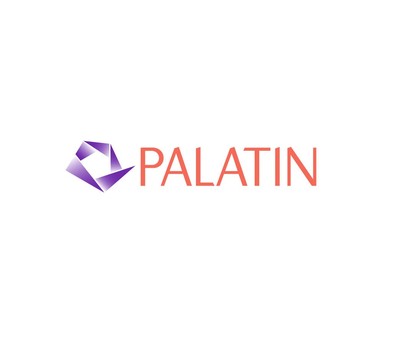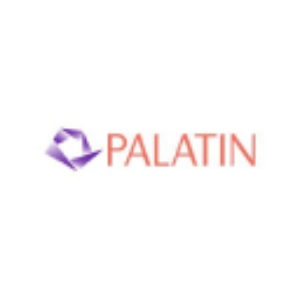Palatin Announces Phase 3 PL9643 MELODY-1 Dry Eye Disease (DED) Clinical Data Results Presented at American Society of Cataract and Refractive Surgery (ASCRS) 2024
- Positive Phase 3 Study Results Included in Dr. Eric Donnenfeld's Presentation
- Co-Primary Symptom Endpoint of Pain Met Statistical Significance (P<0.025) and 7 of 11 Secondary Symptom Endpoints Met Statistical Significance (P<0.05), 12-Week Treatment Period
- Rapid Onset of Efficacy at the 2-Week Treatment Period, Multiple Symptom Endpoints, Including the Co-Primary Pain Endpoint, Met Statistical Significance and Continued to Improve Over the 12-Week Treatment Period
- At the 2-Week Treatment Period, Multiple Sign Endpoints, Including All 4 Fluorescein Staining Endpoints, Met Statistical Significance (P<0.05)
- Excellent Safety and Tolerability Profile
- Discussions with FDA on Regulatory Approval Path Planned for 2Q 2024
The presentation by Dr. Eric Donnenfeld, entitled "Updates, What's New in Treatment, What's New and on the Threshold of FDA Approval" was presented on Friday, April 5th, at the ASCRS Conference in
"Analysis of our successful Phase 3 MELODY-1 clinical trial results, demonstrate that PL9643 has broad, robust and rapid efficacy for multiple symptom endpoints. The efficacy results were statistically significant for the co-primary symptom endpoint of pain and 7 of 11 exploratory secondary endpoints, including eye dryness, as early as two weeks (the 1st time point measured). The effect improved and maintained statistical significance over the 12-week treatment period," said Carl Spana, Ph.D., President and Chief Executive Officer of Palatin. "Additionally, we have identified a substantial patient population with statistically significant efficacy results after two weeks of treatment with PL9643 for multiple sign endpoints, including all four fluorescein staining endpoints, which improves ocular surface disorders and facilitates the identification and treatment of epithelial damage and corneal injuries."
"The early onset of efficacy for multiple symptoms and signs of dry eye disease and the excellent ocular safety and tolerability profile positions PL9643 as a highly differentiated product. We are advancing discussions with potential collaboration partners and actively preparing for a meeting with the FDA later this quarter to discuss the remaining studies for the PL9643 program required to support an NDA submission," Dr. Spana continued.
"Dr. Donnenfeld's presentation is important, not only because it illustrates PL9643 MELODY-1 positive results in the context of other developmental programs for DED but identifies a potential key differentiating treatment option for dry eye disease in terms of its safety and tolerability profile," commented Michael Raizman, M.D., Chief Medical Officer at Palatin.
Safety analysis from the Phase 3 MELODY-1 trial indicated PL9643 was well-tolerated. There were fewer ocular treatment related adverse events in the PL9643 arm (
The Phase 3 MELODY-1 trial was a multi-center, randomized, double–masked and vehicle–controlled study that enrolled 575 patients at sites in the
PL9643 represents an opportunity to bring relief to dry eye sufferers. While DED is one of the most common ocular disorders, affecting an estimated 38 million people in the
About the American Society of Cataract and Refractive Surgery (ASCRS)
The ASCRS Annual Meeting, focused on therapeutic, surgical, and administrative topics directly relevant to ASCRS and ASOA members, offers symposia, lectures, workshops, sessions, courses, and skills transfer labs to help anterior segment surgeons, practice managers, administrators, technicians, and nurses maintain and refine their skills.
About Dry Eye Disease (DED)
Dry eye disease is a common inflammatory disease that, left untreated, can become extremely painful and lead to permanent damage to the cornea and vision. DED affects the cornea and conjunctiva of the eye resulting in irritation, redness, pain, and blurred vision. The disease is characterized by insufficient moisture and lubrication in the anterior surface of the eye, leading to dryness, inflammation, pain, discomfort, irritation, diminished quality of life, and in severe cases, permanent vision impairment. Existing therapy for DED is generally regarded as inadequate by many physicians and patients, and often requires months to demonstrate activity.
About Melanocortin Receptor Agonists and Inflammation
The melanocortin receptor ("MCr") system has effects on inflammation, immune system responses, metabolism, food intake, and sexual function. There are five melanocortin receptors, MCR1 through MCR5. Modulation of these receptors, through use of receptor-specific agonists, which activate receptor function, or receptor-specific antagonists, which block receptor function, can have medically significant pharmacological effects. Many tissues and immune cells located in the eye (and other places, like the gut and kidney) express melanocortin receptors, empowering our opportunity to directly activate natural pathways to resolve disease inflammation.
About Palatin
Palatin is a biopharmaceutical company developing first-in-class medicines based on molecules that modulate the activity of the melanocortin receptor systems, with targeted, receptor-specific product candidates for the treatment of diseases with significant unmet medical need and commercial potential. Palatin's strategy is to develop products and then form marketing collaborations with industry leaders to maximize their commercial potential. To learn more about Palatin, please visit us on www.Palatin.com and follow us on Twitter at @PalatinTech.
Forward-Looking Statements
Statements in this press release that are not historical facts, including statements about future expectations of Palatin Technologies, Inc., such as statements about Palatin products in development, including PL9643, clinical trial results, potential actions by regulatory agencies including the FDA, regulatory plans, development programs, proposed indications for product candidates, and market potential for product candidates are "forward-looking statements" within the meaning of Section 27A of the Securities Act of 1933, Section 21E of the Securities Exchange Act of 1934 and as that term is defined in the Private Securities Litigation Reform Act of 1995. Palatin intends that such forward-looking statements be subject to the safe harbors created thereby. Such forward-looking statements involve known and unknown risks, uncertainties and other factors that could cause Palatin's actual results to be materially different from its historical results or from any results expressed or implied by such forward-looking statements. Palatin's actual results may differ materially from those discussed in the forward-looking statements for reasons including, but not limited to, results of clinical trials, regulatory actions by the FDA and other regulatory agencies and the need for regulatory approvals, Palatin's ability to fund development of its technology and establish and successfully complete clinical trials, the length of time and cost required to complete clinical trials and submit applications for regulatory approvals, products developed by competing pharmaceutical, biopharmaceutical and biotechnology companies, commercial acceptance of Palatin's products, and other factors discussed in Palatin's periodic filings with the Securities and Exchange Commission. Palatin is not responsible for updating events that occur after the date of this press release.
Palatin Technologies® is a registered trademark of Palatin Technologies, Inc.
References
1. Market Scope 2023 Dry Eye Product Market Review; does not include OTC artificial tears and other Rx anti-inflammatory and tear stimulants.
2. Mordor Intelligence – Dry Eye Disease Market Size & Share Analysis – Growth Trends & Forecasts (2024-2029).
![]() View original content to download multimedia:https://www.prnewswire.com/news-releases/palatin-announces-phase-3-pl9643-melody-1-dry-eye-disease-ded-clinical-data-results-presented-at-american-society-of-cataract-and-refractive-surgery-ascrs-2024-302109894.html
View original content to download multimedia:https://www.prnewswire.com/news-releases/palatin-announces-phase-3-pl9643-melody-1-dry-eye-disease-ded-clinical-data-results-presented-at-american-society-of-cataract-and-refractive-surgery-ascrs-2024-302109894.html
SOURCE Palatin Technologies, Inc.









